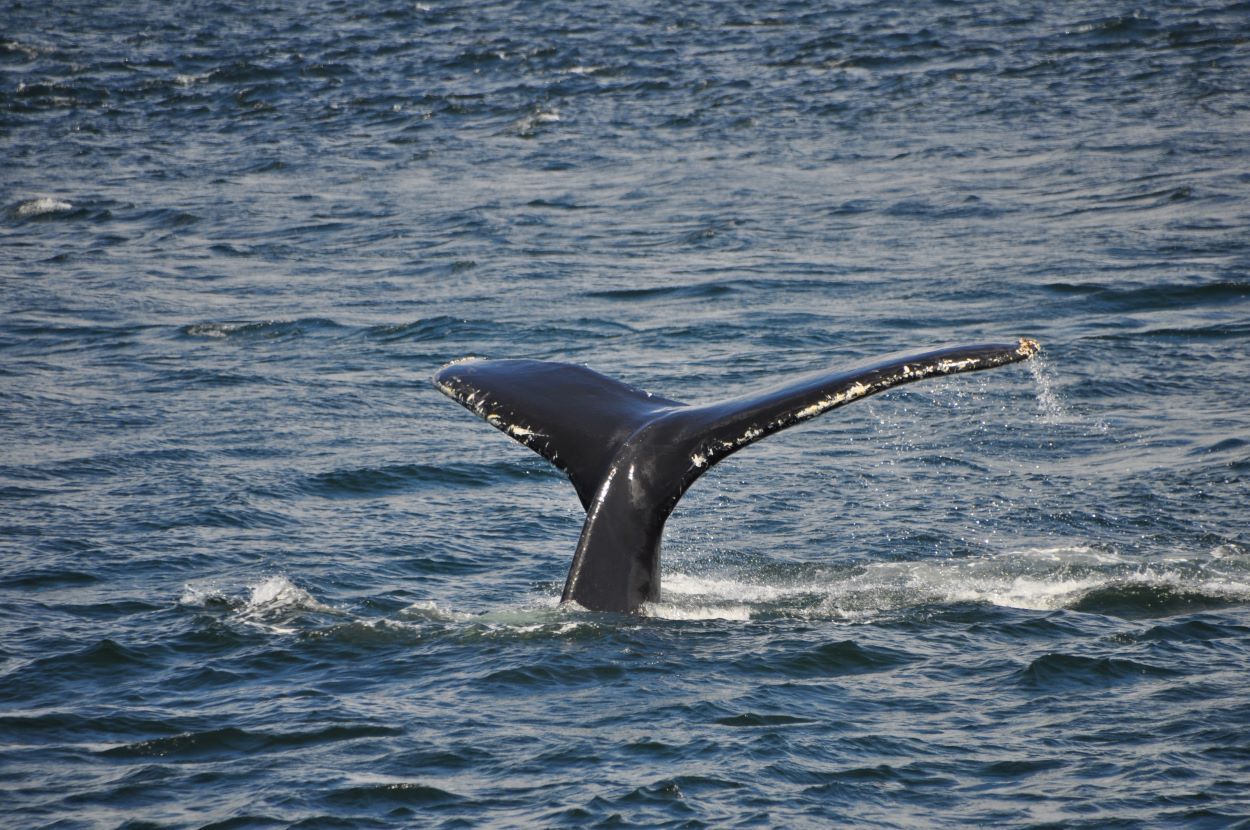Whale watching in the Rimouski area : a magical experience!
The end of the cold months and the return of the goods days mark a shift in the activities on offer in Rimouski. Of the many neat activities available in springtime, whale watching is one of the most popular things to do in Rimouski.
Many species of cetaceans live in the St. Lawrence River and there are numerous spots to observe them from. It can be a challenge to decide which whale watching excursion to choose, and not everyone is familiar with how it works.
From the species and locations to the season and details of the activity, Vieux Loup de Mer explains everything you need to know about whale watching in Rimouski and its environs.
WHAT SPECIES OF WHALES ARE FOUND IN THE RIMOUSKI AREA?
The inhabitants of the Bas-Saint-Laurent region are fortunate—of the more than 80 species of cetaceans in the world, more than ten are found in the St. Lawrence River.
Whales are abundant in the St. Lawrence estuary because it provides plentiful access to food. The estuary is a place where three marine currents intersect, resulting in large numbers of krill. Off the coasts and islands of the region, you can often see a large tail break the water in the distance.
The species of cetaceans that can be sighted in the St. Lawrence River include:
- Common minke whale
- Fin whale
- Blue whale
- Humpback whale
- North Atlantic right whale
- Sperm whale
- Beluga
- Harbour porpoise
- Atlantic white-sided dolphin
There are other species that can be found in the area, particularly in the Gulf, but they rarely venture upriver and are therefore seldom seen.
WHERE TO GO WHALE WATCHING IN THE RIMOUSKI AREA
There are three main regions that offer whale watching: the Gaspé Peninsula, the Côte-Nord and the Bas-Saint-Laurent. In the Gaspé region, whale watching sites are located off the coast of Gaspé and Cap-des-Rosiers. On the Côte Nord, you’ll need to go to Port-Cartier.
The best region for whale watching is undoubtedly the Bas-Saint-Laurent, with many excursions leaving from Tadoussac, Trois-Pistoles and Rimouski. The marine life in the area is more abundant and more varied than elsewhere in the St. Lawrence.
Many species of cetaceans can be found off the coast of Saint-Barnabé Island and its environs. If you go whale watching in the Rimouski region, you’ll be able to see species such as humpback whales, fin whales, common minke whales, harbour porpoises and belugas. Note that the species present in the area vary from season to season.
Tip from Vieux Loup de Mer: If you’re curious about which species you’ll be able to see, check out the interactive map at Whales Online! The website shows where the various species are on a weekly basis based on censuses and previous seasons.
WHEN TO GO WHALE WATCHING IN THE RIMOUSKI AREA
Whale watching season in Rimouski runs from mid-May to the beginning of October. June to September is the best time to spot whales and other cetaceans.
To prepare for your whale watching tour, contact the organizers to find out about the current season and which species you’re likely to see.
Please note that the whale watching excursions do not take place in Rimouski exactly but in the region, in Rivière-du-Loup or near Tadoussac!
HOW DOES WHALE WATCHING WORK?
Whale watching in Rimouski can be done in a few different ways. The most common and popular method is to approach the cetaceans by boat, while maintaining a safe distance. The boats can range in size from zodiacs to large motorboats. Whale watching can also be done by sea kayak for a more unique, intimate experience.
There are also places along the St. Lawrence River where you can watch whales from solid ground. Get out your binoculars and look out for any majestic heads cresting the water!
Vieux Loup de Mer’s tip: Sea kayaking allows sustainable tourism for whale watching! 😉
WHALE WATCHING TIPS
- Whale watching is subject to strict regulations—boats must stay at least 100 metres away from cetaceans in order to protect the animals and prevent accidents. As majestic as whales are, they can be dangerous too.
- If you see groups of seagulls suddenly diving into the water, it means that there’s plenty of food in the area, which whales may want to take advantage of as well. 😉
- Whale watching is an auditory experience as well as a visual one. Listen for the whales’ breathing, sounds and movements through the water.
- Consider bringing along a species identification guide to help you recognize the types of cetaceans you may encounter.
- Don’t forget to bring binoculars to help you get a better view!
Final tip from Vieux Loup de Mer: Looking for a fun activity to do this spring? Why not check out a sugar shack in Rimouski for a traditional Quebec experience? 😉
STAY AT VIEUX LOUP DE MER BEFORE GOING WHALE WATCHING IN THE RIMOUSKI AREA
Whale watching is a must for anyone visiting Rimouski in the warmer months. This one-of-a-kind activity is an unforgettable experience for young and old alike.
There are many places to go whale watching in the region, and Rimouski has numerous organizations that offer different types of whale watching excursions. Before going out on the river, why not rest up at one of our chalets in Rimouski? Vieux Loup de Mer has chalets to suit every taste. Contact us today! Our team will be happy to welcome you and offer their best tips for a successful trip 😉.


